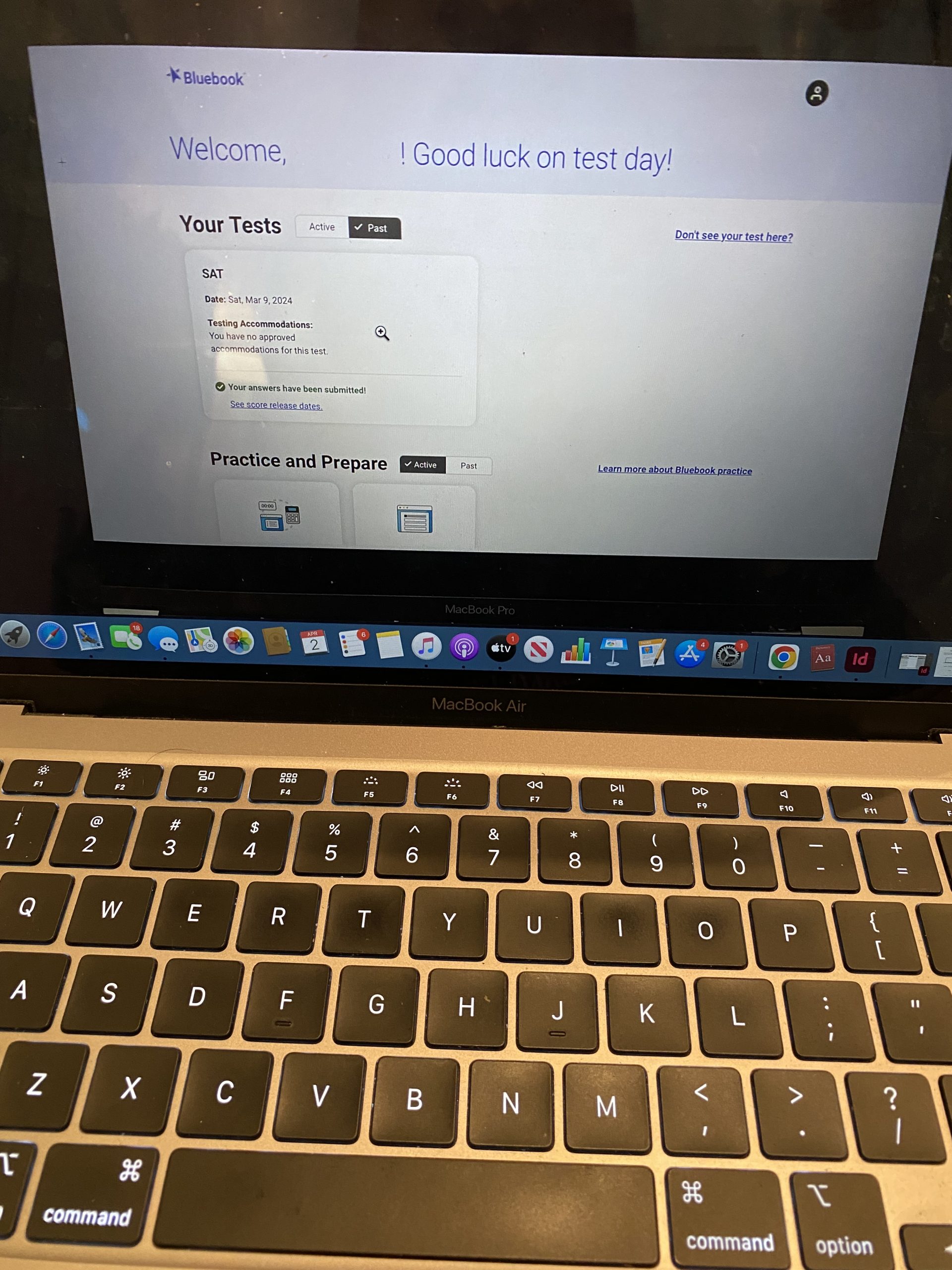Gone are the days of rushing to bubble in answers with a No. 2 pencil on a scantron. On Saturday, March 9, CollegeBoard administered the digital SAT for the first time to students in the United States!
The CollegeBoard made a significant decision to change the SAT from the traditional paper-and-pencil test to being administered digitally. This change marks a significant step toward modernity and adaptation in the face of technological improvements and represents a turning point in the history of standardized testing.
Prior to this, CollegeBoard administered the digital version of the SAT to international students, with the first digital exam being administered on March 11, 2023. However, as of spring 2024, CollegeBoard will only administer the digital SAT.
Students are now utilizing a digital app called Bluebook–navigating between questions and sections with a mouse click or a screen tap. This modification reflects the widespread impact of technology in modern life as it continues to influence our futures.
Margaret Gaspar ‘25 comments, “I especially took use of the practice tests [the app] offers; it is simple and easy to use.”
One of the most noteworthy advantages of the digital SAT lies in its ability to improve accessibility and flexibility for students. Students can now select a testing schedule that best fits their requirements and interests as the exam can be administered on different days and at multiple places.
Additionally, the new structure allows students more time to answer each question as the exam is shortened by a whole hour (3 hours and 15 minutes to 2 hours and 15 minutes) and has fewer questions.
Another advantage of the digital SAT is that instant score reports are now available to students, providing them with quick feedback on their performance and enabling them to make timely changes to their academic goals. For the recently administered digital SAT, the scores will be out by Friday, March 22.
Furthermore, because the digital format is adaptable, it allows for more customized testing experiences as questions can modify their complexity depending on the test taker’s answers, giving a more accurate evaluation of their skills. “I think [the new format of the SAT] is beneficial as many students nowadays are used to testing online as opposed to on paper,” comments Elianna Calicchio ‘25 after taking the March SAT.
However, the newer version is not without criticisms and concerns. The digital SAT can negatively affect students who might not have access to dependable equipment or who are not as comfortable using digital interfaces.
The CollegeBoard’s decision to administer the digital SAT signifies a dramatic change in standardized testing methodology. The digital SAT has the potential to completely change how we administer standardized testing, providing more accessibility, flexibility, and accuracy in evaluating students’ academic abilities.







